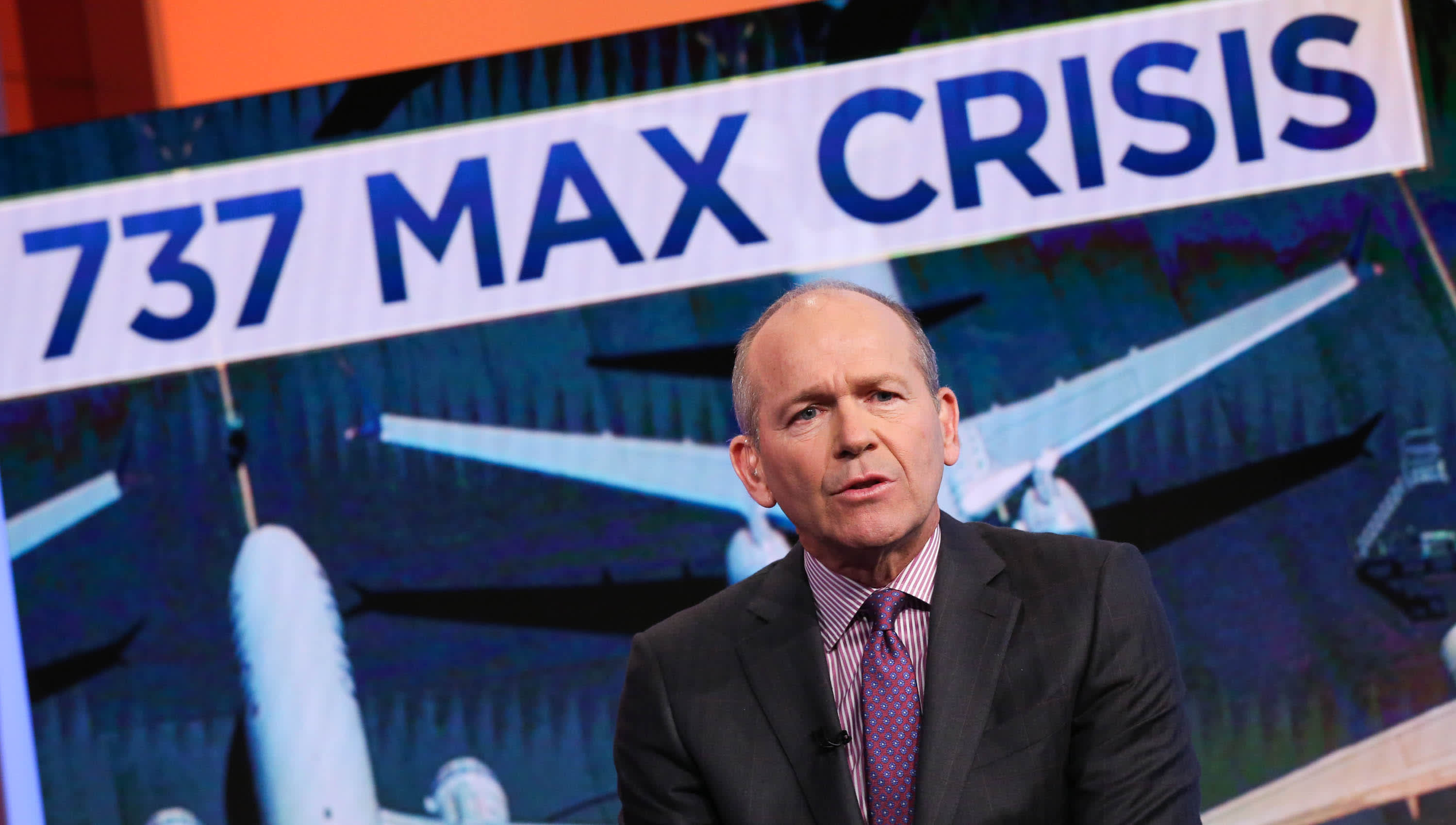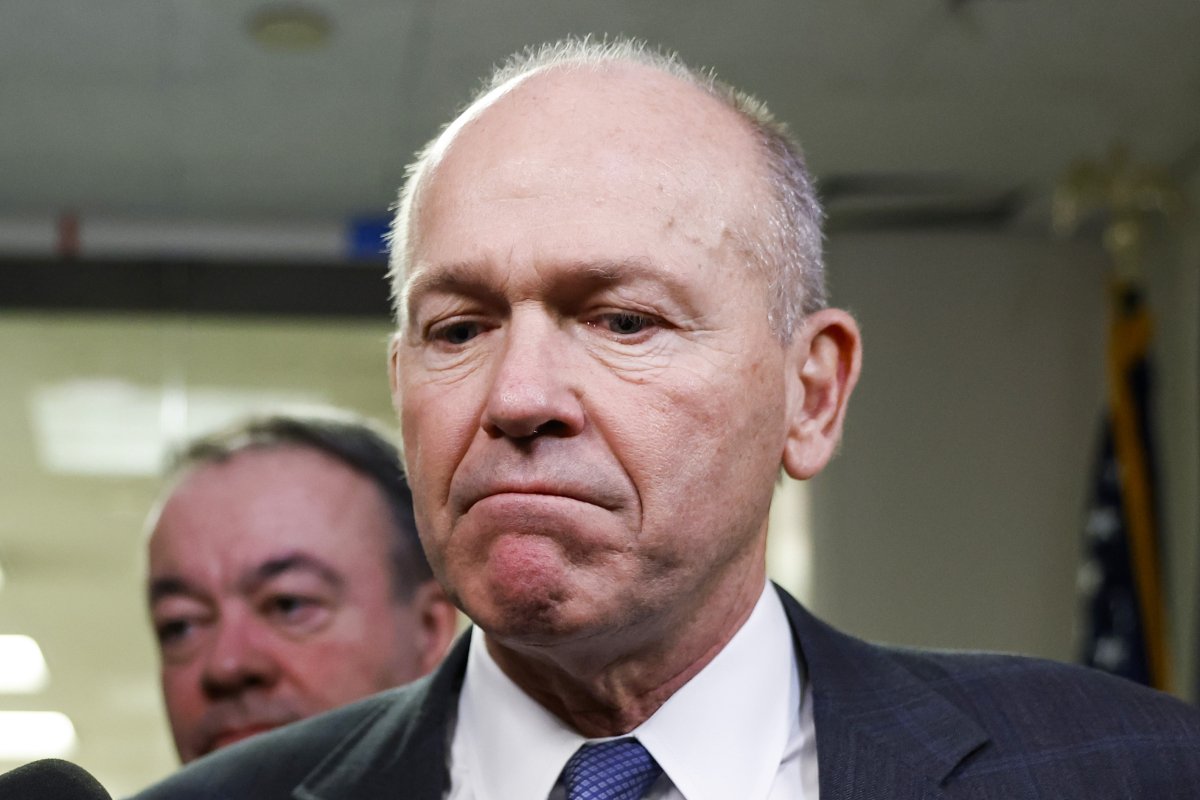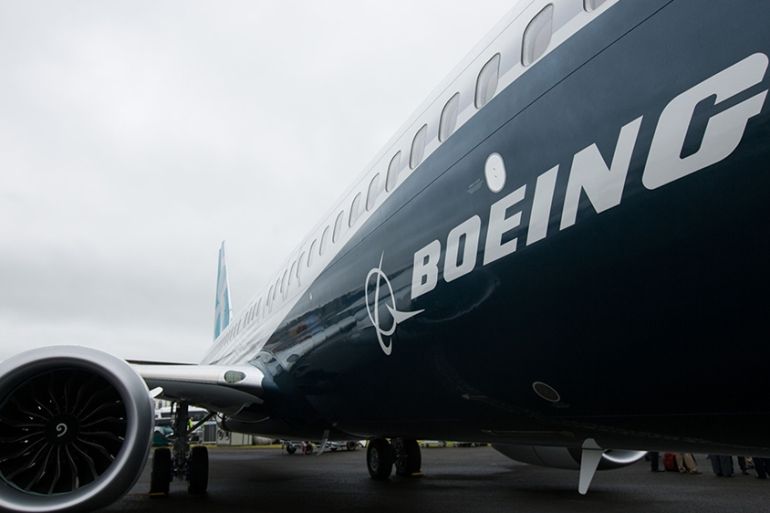Flying In Boeing Aircraft? Boeings Credibility In Shreds For Keeping Profitability Above Safety, Sued By Shareholders Following MAX 9 Blowout
Boeing, one of the world's leading aerospace companies, is currently grappling with a series of challenges that have sent shockwaves through its operations and leadership. Over the past week, the company has faced a cascade of issues ranging from regulatory constraints on production to pressure from lawmakers and concerns over quality control. Amidst these challenges, CEO Dave Calhoun finds himself under scrutiny as confidence in his leadership is tested. This turmoil follows closely on the heels of a simulated door blowout incident on a 737 MAX 9, further exacerbating concerns within the industry. From its manufacturing base in Seattle to regulatory oversight in Washington and global finance hubs like Dublin, Boeing finds itself ensnared in a complex web of competing pressures.

Boeing finds itself in a state of upheaval following a tumultuous week, which has disrupted production schedules and development plans, and has cast doubt on CEO Dave Calhoun’s leadership.
The turmoil comes nearly a month after a simulated door blowout incident on a 737 MAX 9, according to industry insiders.
The challenges faced by Boeing extend from its production hub in Seattle, where 737s are manufactured, to Washington, where regulatory oversight is enforced, and to Dublin, a key center for air finance. The company is caught in a convergence of conflicting pressures.
In the span of just eight days, Boeing has encountered unprecedented hurdles from regulatory authorities imposing a cap on the growth of 737 production, yielding to pressure from lawmakers to withdraw a request for a temporary exemption from design regulations for its upcoming model, and facing the potential backlash from a major customer.
The turmoil persists, with U.S. investigators expected to release a preliminary report on the Alaska Airlines incident, which occurred on January 5th, following their visit to the 737 factory last Friday.
The head of the Federal Aviation Administration (FAA) is slated to testify at a U.S. House hearing on Tuesday, and Calhoun may soon face lawmakers in a hearing as early as March.
During these hearings, the FAA will be questioned regarding the presence of “persistent” quality issues.

Industry analysts view this period as a critical test of management’s capacity to navigate Boeing through its latest crisis, while striving for greater transparency compared to the legalistic responses following the MAX crashes in 2018 and 2019, which claimed 346 lives.
Adam Pilarski, Senior Vice President at Avitas and former Chief Economist at Douglas Aircraft (now part of Boeing), remarked, “What they need to do now is restore credibility with the FAA and customers, and obviously somebody will have to pay the price.” Pilarski expressed skepticism regarding the CEO’s ability to weather this storm, a sentiment echoed by other industry veterans.
Although there was some relief with the announcement of quarterly earnings, during which Boeing reported that 737 output had surpassed expectations before being curtailed, tensions remained palpable.
An exchange between Bank of America analyst Ron Epstein and Calhoun highlighted a significant issue likely to dominate discussions- why it took until now, following a near-catastrophic event, to intensify quality checks, despite the MAX production line being under intense scrutiny for the past five years due to previous crashes.
During the post-earnings analyst call, Epstein expressed bewilderment, stating, “I’m still trying to get my head around how we got here… Wasn’t the 737 line like the most scrutinized production line in the world?”
Calhoun defended the company’s stance, expressing dissatisfaction with the premise, and highlighting improvements in quality data, while acknowledging that such incidents should never occur.
After serving on Boeing’s board for a decade, Calhoun assumed the role of CEO in 2020, pledging to rebuild trust following the earlier MAX crisis.

However, questions have arisen regarding his ability to distance himself from the company’s past and implement the necessary changes for Boeing’s recovery.
In a letter to employees dated January 31st, released by Boeing, Calhoun emphasized that increased scrutiny, whether from internal sources, regulators, or external stakeholders, will ultimately improve the company.
At the same time, speculation about a potential shake-up heightened this week following Boeing’s decision to retract a safety exemption request that could have expedited the certification process for its upcoming aircraft, the 737 MAX 7.
While this decision was made under pressure from lawmakers, it raised concerns about Boeing’s relationship with key customers like Southwest Airlines, the largest purchaser of the MAX 7, and cast doubt on the timeline for the MAX 10, a sister model.
Boeing’s initial intention to seek certification for the MAX 7 with a temporary waiver, while concurrently developing an enhanced anti-icing system, encountered obstacles during the Airline Economics finance summit in Dublin, where industry leaders convene.
While historically influential, the public reaction this time was relatively subdued, with leasing CEOs expressing support for Boeing’s management and Ryanair’s CEO defending Calhoun amidst reports of United Airlines potentially shifting orders to Airbus.
However, discussions on the sidelines of the conference indicated a more serious tone, with speculation rife about potential changes within Boeing or its commercial division.
![]()
The abrupt reversal on the MAX 7 application caught many off guard, particularly given Calhoun’s previous assurance that the request would not be withdrawn. Airlines scrambled to assess the implications for the widely anticipated MAX 10.
While Boeing focused on redesigning the MAX 7 to mitigate potential debris risks from an engine casing in the event of an anti-icing system failure, delegates questioned whether this could indirectly impact other systems, especially in a stricter regulatory environment.
Boeing refrained from speculating on potential scenarios for the MAX 10, with CFO Brian West asserting that certification would occur at the FAA’s discretion.
Some industry insiders attributed the backtrack to Boeing’s unsuccessful attempt to influence regulation, including Calhoun’s engagements with lawmakers preceding an impending Senate Commerce Committee hearing.
Following the Alaska incident, other industry sources indicated minimal chances of FAA approval for the exemption in the current regulatory climate.
Calhoun’s decision to withdraw the MAX 7 application came after a meeting with Senator Tammy Duckworth, chair of the Commerce Committee’s aviation safety subcommittee, who commended the move as being in the best interest of both shareholders and passengers.

Shareholders Wrath
Boeing is also facing legal action from shareholders in the wake of the mid-air cabin panel blowout on an Alaskan Airlines 737 MAX 9 on January 5th.
The lawsuit alleges that Boeing prioritized profits over safety and deceived shareholders regarding its commitment to aircraft safety.
In a proposed class action filed on Tuesday, shareholders argue that Boeing spent over four years following the crashes of two other MAX planes in October 2018 and March 2019, assuring investors of its unwavering focus on safety and its refusal to compromise safety for financial gain.
However, shareholders claim that these statements were misleading as they concealed issues of “poor quality control” on Boeing’s assembly line, leading to an inflated stock price.
Boeing’s stock price plummeted by 18.9% from January 5th to January 25th, 2024, following the Federal Aviation Commission’s decision to halt MAX production expansion due to safety concerns. The decline resulted in a loss of over $28 billion in market value.
The lawsuit, filed in the federal court of Alexandria, Virginia, covers shareholders from October 23, 2019, to January 24, 2024, and is spearheaded by Rhode Island General Treasurer James Diossa.
Defendants include Boeing’s Chief Executive Dave Calhoun and his predecessor Dennis Muilenburg, as well as Chief Financial Officer Brian West and his predecessor Gregory Smith.
Diossa expressed hopes that the case would prompt changes in Boeing’s practices to enhance passenger safety in the future. The incident on January 5th led to the temporary grounding of 171 MAX 9 planes, causing numerous flight cancellations for airlines like Alaska Air Group (and United Airlines, although there were no fatalities. Some passengers have filed lawsuits against Boeing and the carrier.
On Wednesday, Boeing announced its inability to provide full-year financial targets due to uncertainties surrounding its aircraft.
Despite this, it reported fourth-quarter results surpassing expectations, including a $30 million loss, $22 billion in revenue, and $3.38 billion in cash flow.

The Last Bit, Boeing’s recent legal challenges indicate the deepening crisis facing the company in the aftermath of the mid-air cabin panel blowout incident on an Alaskan Airlines 737 MAX 9.
Meanwhile, shareholders’ lawsuits alleging prioritization of profit over safety and deceptive statements regarding aircraft safety paint a troubling picture of Boeing’s corporate practices. The significant decline in Boeing’s stock value following regulatory actions further highlights the gravity of the situation.
As legal proceedings unfold, the outcome of these lawsuits may not only impact Boeing’s financial standing but also drive necessary changes in its operational and safety protocols.
Amidst ongoing uncertainties, Boeing’s commitment to transparency and accountability will be critical in rebuilding trust with stakeholders and ensuring passenger safety in the future.




